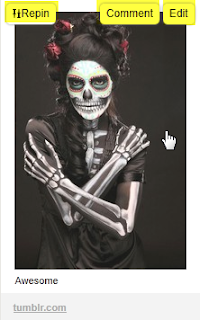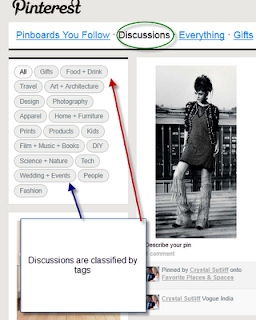Superintendent John J. Pedicone,
Ph.D.
Tucson Unified School District
1010 E. Tenth St.
Tucson, AZ 85719
(520) 225-6000
Hinchas de Poesía
c/o
Yago S. Cura, Publisher
Yago S. Cura, Publisher
Max Macias, Librarian
11928 Venice Blvd.
L.A., CA 90066
Dear Dr. Pedicone:
We
have never met, and my son and/or daughter is not matriculated in the school
district you oversee. I am writing today in my capacity as the publisher of Hinchas
de Poesía (www.hinchasdepoesia.com), a fledgling online literary journal,
and in collaboration with Max Macias, a Chicano librarian living near Portland,
Oregon. We are both members of REFORMA, although the contents of this letter
and the opinions expressed herein solely belong to us (Yago S. Cura and Max
Macias).
We are writing
to express our intense gratitude for your continuing, yet albeit wholly
indirect, support of Ethnic Studies in the United States of America. Put
simply, if it were not for you upholding Arizona state law ARS 15-112,
which prohibits the use of educational materials that, "promote the
overthrow of the United States government; promote resentment toward a race or
class of people; are designed primarily for pupils of a particular ethnic
group; advocate ethnic solidarity instead of the treatment of pupils as
individuals," then Ethnic Studies in the United States might still be
relegated to a tangential artery of U.S. literature. In one fell swoop of pencil-pushing
preemptiveness, you have guaranteed the ascent of Ethnic Studies in this
country for at least another 10 years. My humble journal doesn’t sell
advertisements, so this will at least ensure that we remain relevant (and
salient--since I cover all overhead) for at least another five to seven years.
Your harsh,
undercover promotion of Ethnic Studies has certainly caught the attention of a
generation of disaffected youth of color, who might not have ever heard of
Ethnic Studies, nor read the books the school district chose to ban. Whereas
before these students were slightly motivated to learn historical perspectives
not routinely offered to them, now they are up-in-arms and agitated to learn
their history. In other words, you have
inadvertently created convenient reading lists of forbidden books for young
people. You have given them reason to utilize their nearest public library,
seeking these books.
Your concerted attacks might have
actually even increased the circulation of these forbidden tomes in inner-city
libraries and under-resourced school system libraries. We anticipate “Latino” literature will
germinate a new corps of writers from the vigilant, patriotic headlocks you
have exerted on some of these titles, such as Howard Zinn’s A People’s
History of the U.S., Sherman Alexie’s The Lone Ranger and Tonto
Fistfight in Heaven (a book I had the pleasure of forcing my students in
the Bronx to read), and Luis Rodriguez’s Always Running: La Vida Loca—Gang
Days in L.A.
Max and I are
both survivors of Reaganomics, and we have oodles of respect for Hip-Hop.
Interestingly enough, there are many music critics who believe that without the
social squeeze put on people of color by Reaganomics, there would have been no
Hip-Hop culture. Could you imagine a world without Afrika Bambattaa, Public
Enemy, or KRS-One, just to name a few? As a small online publisher, I probably
would have had increasingly less and less to publish if you would have just left
Mexican American Studies alone. The important, but immaterial ideas
disseminated in Ethnic Studies classes have to compete with the more lucrative
disciplines like Business and Biological Sciences. Now, however, we predict,
there will be a renaissance of new Ethnic Studies presses that develop to
publish new studies, articles, fiction, poetry and editorials from the myriad
aspects and perspectives that these values bring to light. These new
presses will present avenues for new ideas and great historical works to be
published and spread throughout our great nation and the world.
Videos, podcasts, and other new forms of media will be produced and made
available to the masses. We simply cannot thank you enough.
There is a deep
distrust of your actions felt by people in our communities; it is our hope that
this letter will help them see your actions in a new light. Hegel’s Cunning of Reason
is alive and well in the United States--particularly in Arizona! Let's be
honest-- without your sage and cosmopolitan bigotry, many of the writers whose
books you rightfully banned might have been relegated to the status of literary
conference speakers and community college hacks--destined solely to the erosion
of illiteracy at the "hood" level.
Now, there will be an unprecedented call for these authors to make
appearances, and book orders will grow. More importantly, you and your peers
have (as Sherman Alexie has already pronounced) made these texts “sacred”; by
making them politically illicit, you have polarized their attractiveness. Seizing them off of the shelves of schools in
your state you have provisioned the liberal opposition with a facile foray of
direct opposition. At the very least, you have made them eminently attractive
to minority students and disenfranchised American youth. You have forced
editors out of their editing chairs and deputized them (informally, of course)
to become book smugglers, or librotraficantes.
Tony Diaz, the
editor of Nuestra Palabra: Latino Writers Having Their Say, could have
just been another minority writer, editor, translator, teacher; you have made
him aspire to justice and smuggle into your district relatively popular texts
which now smolder with the mesmerizing possibilities of something forbidden.
You have empowered our texts at a time when less and less people are reading
books, and less and less people of color are publishing and writing them.
We believe we
can agree on one irrefutable fact. The
T.U.S.D. is doing something right: they
are increasing an interest in education. You are giving educated Ethnic Studies
professors a lectern from which to speak; this will only increase education and
the desire to be educated in the Latino community. As you’re aware,
education is the best weapon against oppression and indoctrination. Placing
Paolo Freire’s Pedagogy of the Oppressed on your banned books list
highlights his emphasis on these ideas; Freire’s study is something all readers
can directly relate to, explaining why unjust social conditions are allowed to
propagate. Our people are interested in what everyone is interested
in--bettering their lives and creating opportunities for their children.
Again, we want
to thank you in advance for your efforts toward propagating, promulgating, and
publicizing excellent works by our most celebrated Latino writers, historians,
and intellectuals.
Gracias!
Yago S. Cura
Publisher, Hinchas de Poesía
Max Macias
American
Librarian













